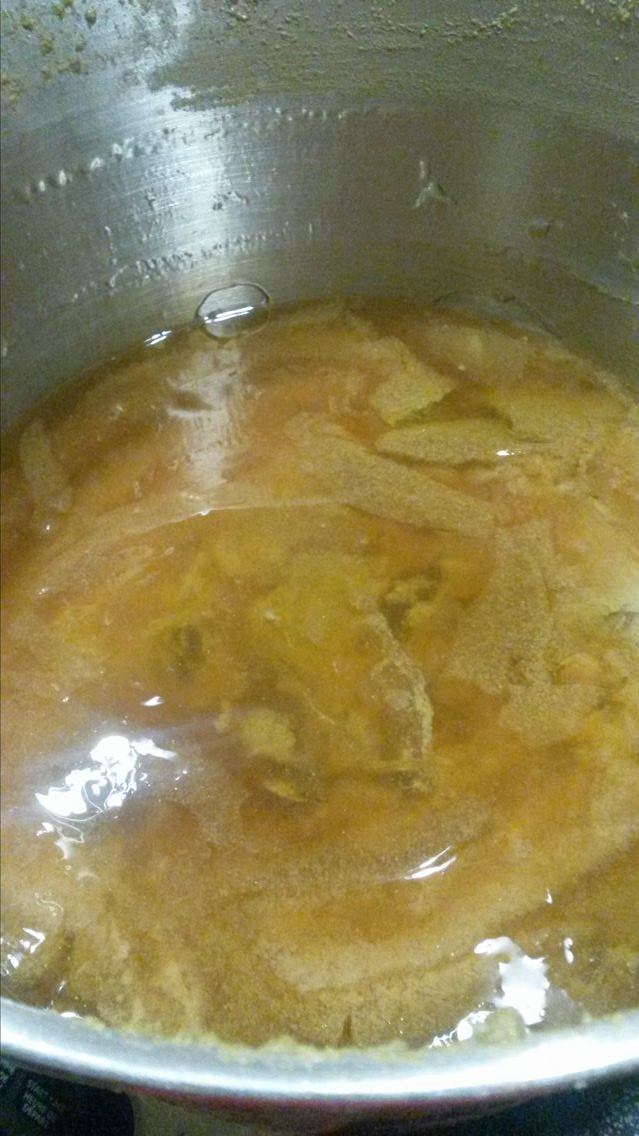NinjaPoodles
Member
Long story short : There's this weird gelatin/jelly-like substance in the bottom of my wort (after boil) when transferring to secondary (to remove the bottom junk and to pitch yeast with fresh water) before putting in primary and yeah I found all these long rope-like strains of jelly
Was making a Clone Corona Ale and these were my steps (note : everything was sterilized) :
1) Mashed Caramel 20L Cargill (227g) and Rice Flakes (1kg) for 30mins at 155 deg
2) removed those and got to a boil
3) removed from stove to put in Powder Cbw Golden Light Malt (1kg)
4) put back on stove to a boil and started timer
5) added Cz Saaz (2oz) at 60mins
6) added rest of Powder Cbw Golden Light Malt (.5kg) at 30mins
7) added rest of Cz Saaz (1oz) at 15mins and Lemon Zest (.5oz)
8) added Carraghenine/Irish moss (20g) at 10mins
9) added Dextrose (500g) at 5mins
10) removed from boil when countdown was done and cooled down to 80 deg in a cold bath with ice
11) next thing I know there's this weird gelatin/jelly-like substance in the bottom of my wort (after boil) when transferring to secondary (to remove the bottom junk and to pitch yeast with fresh water) before putting in primary
12) No idea what to do, so I didn't throw the (precious?) jelly away in case it has sugar in it and flavours... I don't know what to do!
Jelly itself seems to contain sugar and aromas without the junk that you find at the bottom of your wort meaning it's dissociated from that stuff;
hence I still have no idea what to do??
Hoping someone can help and know what happened D:
Thanks !!! (trying not to panic!)
!!! (trying not to panic!)

Was making a Clone Corona Ale and these were my steps (note : everything was sterilized) :
1) Mashed Caramel 20L Cargill (227g) and Rice Flakes (1kg) for 30mins at 155 deg
2) removed those and got to a boil
3) removed from stove to put in Powder Cbw Golden Light Malt (1kg)
4) put back on stove to a boil and started timer
5) added Cz Saaz (2oz) at 60mins
6) added rest of Powder Cbw Golden Light Malt (.5kg) at 30mins
7) added rest of Cz Saaz (1oz) at 15mins and Lemon Zest (.5oz)
8) added Carraghenine/Irish moss (20g) at 10mins
9) added Dextrose (500g) at 5mins
10) removed from boil when countdown was done and cooled down to 80 deg in a cold bath with ice
11) next thing I know there's this weird gelatin/jelly-like substance in the bottom of my wort (after boil) when transferring to secondary (to remove the bottom junk and to pitch yeast with fresh water) before putting in primary
12) No idea what to do, so I didn't throw the (precious?) jelly away in case it has sugar in it and flavours... I don't know what to do!
Jelly itself seems to contain sugar and aromas without the junk that you find at the bottom of your wort meaning it's dissociated from that stuff;
hence I still have no idea what to do??
Hoping someone can help and know what happened D:
Thanks
























![Craft A Brew - Safale S-04 Dry Yeast - Fermentis - English Ale Dry Yeast - For English and American Ales and Hard Apple Ciders - Ingredients for Home Brewing - Beer Making Supplies - [1 Pack]](https://m.media-amazon.com/images/I/41fVGNh6JfL._SL500_.jpg)


































